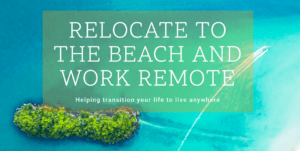The lags and difficulties faced by many of Canada’s indigenous people –especially women– are far from disappearing. Some figures that have come to light in recent days even show that the scenario continues to worsen. According to the Office of the Correctional Investigator, an institution that watches over the rights of detainees in Canada, half of the inmates in prisons managed by Ottawa belong to indigenous groups. However, the women of these communities represent 4.9% of the country’s female population.
“For the first time they reach 50%. It is simply shocking and embarrassing for a country with so many resources”, Ivan Zinger, a Canadian corrections investigator, told The Globe and Mail newspaper. In 2015, indigenous women made up 35% in federal prisons. According to Statistics Canada, they represented 42% of inmates in provincial and territorial prisons at the beginning of 2021. Currently, 32.7% of the total number of men and women incarcerated in federal centers are of indigenous origin. The non-indigenous prison population has been reduced by 18% in the last decade, while that of these groups has increased by 28%.
Cyndy Wylde is a professor in the School of Social Work at the University of Ottawa; she worked for 25 years in the Correctional Service of Canada. Wylde comments to EL PAÍS: “Since 1970, indigenous over representation in the prison network has been cited. And more than half a century later, the numbers keep getting worse. We see the consequences of colonialism. The judicial system is not culturally adapted to these groups and is largely based on punishing; services are lacking, there are language barriers, among other hardships. Communities should be the central actor; it is one of their demands for self-determination towards Ottawa”.
The expert, who belongs to the Anicinape and Atikamekw peoples, adds: “There are ways of evaluating in the system that are problematic. For example, people considered highly dangerous are almost always indigenous. They face many obstacles to obtain parole and, consequently, access services to promote their social reintegration”. Different structural elements also play against it, such as lower education rates and difficulties in housing and drinking water. Similarly, addictions and mental health conditions hit members of these communities harder than other Canadians.
These factors are especially primed with women. Native Canadians are up to 12 times more likely to be victims of murder or disappearance than those from the rest of the country. Likewise, forced sterilization was practiced on thousands of them for decades. A 1993 report from the Royal Commission on Indigenous Peoples already reflected this gloomy scenario through the testimony of an inmate: “We have to recognize the reasons why we are here. We were not born to end up in jail. Things have happened in our lives. We have suffered, we have had many setbacks; all that to get here”.
Wylde highlights the cases of racism and discrimination in different public institutions; one of them, the forces of order. Community organizations in Manitoba, Saskatchewan and British Columbia continue to deplore the fact that the police are slower to investigate disappearances of indigenous women and frequently criminalize these people. A group of natives filed a class action lawsuit against the Quebec government in December. These residents of the city of Val-d’Ora claim to have suffered sexual assaults, beatings and unjustified arrests for years by some provincial police officers. An independent report, published this Monday, placed special emphasis on ill-treatment by the Royal Canadian Mounted Police of native women. Confidence is touched everywhere.
CyndyWylde comments on indigenous women in the prison system: “We were not surprised when we checked their records. They have a history of marginalization within and outside their communities. Violence is a kind of common thread.” She says that many of them have passed through protection centers at an early age or institutions for juvenile delinquents. “Others also lived in boarding schools for indigenous children”,she adds. Wylde refers to the federal pension network (managed by religious groups) that she operated between 1883 and 1996 to forcibly assimilate some 150,000 native minors, under a large catalog of horrors. The discovery of more than 1,400 unmarked graves in several of these centers in the last 12 months has caused worldwide shock.
Last year, Canadian Prime Minister Justin Trudeau asked those responsible for Justice and Public Safety to become deeply involved in the issue of the overrepresentation of the so-called “First Nations” in the prison system. Marco Mendicino, Minister of Public Security, acknowledged last week in a parliamentary session that the figures are “unacceptable”, stating that the Liberal government is going to attack the problem with a series of reforms, although without going into details. In 1999, the Supreme Court of Canada had already pointed out that the high number of natives behind bars meant a “crisis in the judicial system”.
The Indigenous Women’s Association of Canada asks Ottawa to take immediate action; He also points out that every citizen of the country should demand changes. “For decades, successive governments have promised to address this over representation, caused by poverty and unequal social circumstances, and compounded by laws that disproportionately punish marginalized indigenous women in particular. But it is clear that the situation is only getting worse,” said its CEO, Lynne Groulx, in a statement. A ranking -produced through various international surveys- placed Canada in 2021 as the fourth country in the world with the best living conditions for women (the first in America), but, on the other hand, the “Canadian paradise” is not for everyone.

For those who have experienced shifts in consciousness and know that more peace, joy, and love awaits in a better living environment. A bold shared vision. A living community and hub for innovation. A sustainable ecosystem for living and working. A model for the new future.
